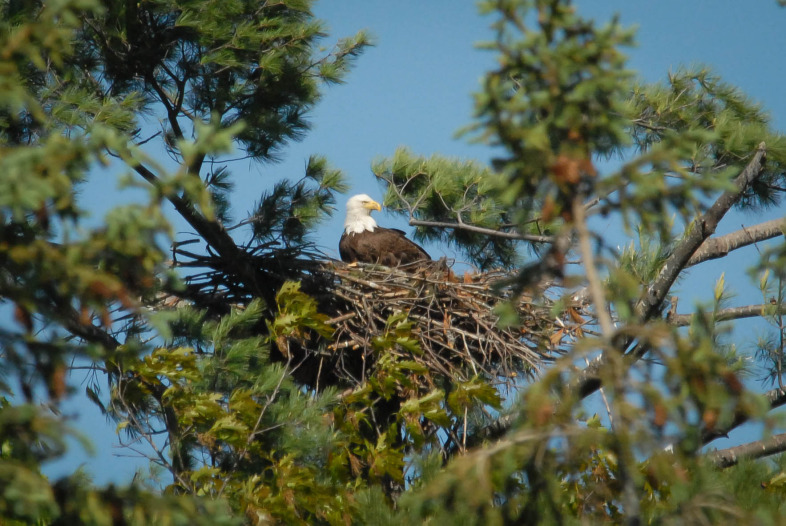
As bald eagle nests become more common in Vermont, the Fish & Wildlife Department is asking bird-watchers to enjoy the birds from a safe distance to avoid disturbing them. Photo by John Hall, Vermont Fish & Wildlife Department.
Bald eagles produced 34 successful young in Vermont in 2016, smashing the most recent record of 26 in 2013 according to the Vermont Fish & Wildlife Department. The birds remain on the list of species protected under Vermont’s state endangered species law, but this strong year has conservationists hopeful for their continued recovery.
This year also saw record nesting success for several other bird species monitored by biologists and volunteers in Vermont. Peregrine falcons successfully raised at least 81 young birds in 2016, breaking the previous state record of 67, according to Audubon Vermont who monitors nesting peregrine falcons in partnership with the Vermont Fish & Wildlife Department.
Vermont also welcomed 80 new birds to the state’s loon population, breaking the previous record of 69. The Vermont Center for Ecostudies monitors the state’s nesting loons.
The mild weather this spring likely helped boost numbers of all three birds, according to John Buck, migratory bird biologist with the Vermont Fish & Wildlife Department. “The cooperative weather provided a bump to many species this year, but the continued recovery of these species is the result of a long-term effort by our department and our partners to conserve the habitat these birds need to thrive,” said Buck.
Peregrine falcons and bald eagles declined in the Twentieth Century nationwide due to loss of habitat, disturbance to nests, and the effects of the pesticide DDT. Laws such as the Clean Water Act, the Endangered Species Act, and a ban on DDT have aided in the recovery of these birds. Loons similarly faced dramatic declines as a result of shoreline development and human disturbance of their habitat.
In 2005, peregrine falcons, loons, and osprey were removed from Vermont’s state endangered species list following years of conservation effort. Bald eagles have recovered in most of the contental U.S. and have been removed from the federal endangered species list, but remain on Vermont’s state endangered species list as they continue to recover locally.
“Vermonters have played a huge role in the recovery of these species,” said Margaret Fowle, biologist with Audubon Vermont. “We work with a large number of citizen volunteers who help monitor nests, while the general public has aided in recovery efforts by maintaining a respectful distance from these birds during the critical nesting season. Paddlers have been keeping away from nesting loons, and the climbing community has been helpful by respecting cliff closures and getting the word out about where the birds are.”
Source: VFWD press release
